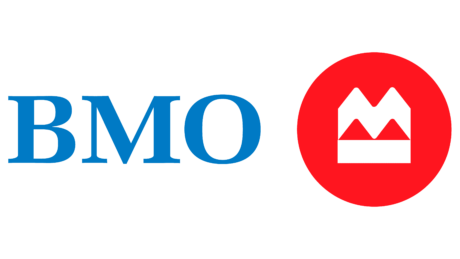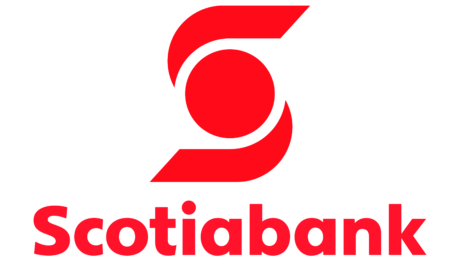Nerdy Insight: Home buyers in Saskatchewan face an unusual predicament: high mortgage rates and surging home sales. Home prices in cities like Regina and Saskatoon remain relatively affordable, but high fixed and variable mortgage rates mean passing a tough mortgage stress test and having to make potentially steep monthly mortgage payments.
Current posted rates at Canada’s Big Six Banks
Rates updated September 8, 2023.
| Lender | 3-year fixed rate | 5-year fixed rate | 5-year variable rate (closed) | 5-year variable rate (open) | Prime rate |
|---|---|---|---|---|---|
| TD Bank | 6.94% | 6.84% | 6.97% | 8.37% | 7.35% |
| BMO | 7.08% | 6.91% | 7.22% | N/A | 7.20% |
| RBC | 7.14% | 6.97% | 7.23% | 10.53% | 7.20% |
| Scotiabank | 7.04% | 6.84% | 7.65% | 10.40% | 7.20% |
| CIBC | 6.94% | 6.79% | 7.20% | 10.50% | 7.20% |
| National Bank of Canada | 7.09% | 6.88% | 7.24% | N/A | 7.20% |
Saskatchewan mortgage rate update: September 2023
In the first week of September, posted one- and five-year fixed mortgage rates inched up at a number of major lenders, making mortgage shopping especially difficult for home buyers in Saskatchewan. Five-year terms remain the more affordable option, which could make buyers think twice about opting for shorter-term mortgages that would allow them to renew — and hopefully score a lower rate — in 2024 or 2026.
According to the Bank of Canada, the average posted rate for a one-year, fixed-rate mortgage was an eye-watering 7.89% as of September 8. At an average rate of 7.04%, three-year fixed-rate mortgages might look more attractive, but they require borrowers to pass the stress test at a brutal 9.04%.
Don’t let your bank’s posted rates make you hyperventilate, though. They’re meant to be negotiated down, and should be closer to the rates found on our table above. Lenders were still offering five-year fixed rates below 5.5% on certain mortgage products as of September 8.
Variable mortgage rates remain pinned to the clouds. On September 6, the Bank of Canada held its overnight rate at 5% after increasing it by 25 basis points in both June and July. Since March 2022, variable-rate mortgage holders have seen their rates rise 10 times — and 475 basis points.
While most buyers have steered clear of variable rates this year, homeowners locked into variable-rate mortgages don’t necessarily have that option. The Bank of Canada’s next overnight rate decision is scheduled for October 25, 2023. The Bank was expected to hold the overnight rate in September, but the door is open for another increase in October.
The Financial Consumer Agency of Canada recently released a set of new guidelines for the country’s mortgage lenders to follow when dealing with borrowers whose finances have been pushed to the breaking point by higher interest rates. If you’re having trouble making your mortgage payments, or are having to make uncomfortable decisions to stay on top of your mortgage, reach out to your lender or mortgage broker immediately to find out what assistance or payment flexibility might be available to you.
Saskatchewan mortgage rate forecast
Variable mortgage rates
Variable rates in Saskatchewan are directly tied to the Bank of Canada’s decisions regarding its overnight rate. The overnight rate won’t be reduced until the Bank is confident that its previous overnight rate increases have thoroughly tamed inflation. When the overnight rate decreases, so will variable mortgage rates.
That’s not likely to happen in 2023. In September, the Bank said it expects inflation to run significantly higher than its 2% target in the near term.
Fixed mortgage rates
Fixed mortgage rates are trickier to predict since they depend on investor activity in the government bond market. When bond yields increase or decrease over an extended period, fixed mortgage rates typically move in the same direction.
Some analysts expect fixed rates to decline somewhat during the fourth quarter of 2023, but larger decreases may not be in the cards until 2024.
Mortgage calculators to inform your home buying decision
Mortgage payment calculator ↗
Estimate your monthly mortgage payments.
Mortgage affordability calculator ↗
Estimate how much house you can afford.
Mortgage closing costs calculator ↗
Create a home buying budget by estimating your closing costs.
Saskatchewan Housing Market – September 2023 Update
Saskatchewan’s housing market had a scorching August, with sales coming in almost 13% above the 10-year average for the month, according to the Saskatchewan Realtors Association.
Despite the rising demand and decreasing inventory, prices in Saskatchewan remain affordable. The benchmark price in the province was $331,100 in August. The minimum down payment required for a home at that price is $16,555.
Saskatchewan home sales and price forecast
Expect prices and sales in Saskatchewan to continue rising at a steady pace for the rest of 2023.
As one of Canada’s most affordable places to live and own property, Saskatchewan should continue attracting new residents, both from other provinces and other countries, which will keep pressure on provincial housing stock.
Low prices and high rents are also attractive to real estate investors, who may covet properties in Regina and Saskatoon for their profitability. The more properties that get snapped up by investors, the tighter the market will become.
Saskatchewan first-time home buyer programs
There aren’t many provincial programs available to eligible first-time home buyers in Saskatchewan. Two of the only ones still available are:
- The Mortgage Flexibilities Support Program, which allows homeowners earning income below certain thresholds to access new unis in designated housing projects in Saskatoon.
- The First-Time Home Buyers’ Tax Credit, which provides a tax credit worth up to $1.050 to eligible taxpayers.
First-timers in Saskatchewan can also make use of federal programs like the First-Time Home Buyer Incentive, the Home Buyers’ Plan and the First Home Savings Account.
Land transfer taxes in Saskatchewan
Saskatchewan doesn’t charge home buyers a land transfer tax. Instead, home buyers must pay two registration fees as part of their closing costs:
- The cost to register a transfer of title is 0.4% of the purchase price. A home worth $300,000 would cost $1,200.
- The cost to register a mortgage depends on the mortgage amount. The cost to register a mortgage worth between $250,000 and $500,000 is $250 per title for the first four titles. For a mortgage worth $500,000.01 and $750,000, the cost is $500 per title. For a fifth title, the registration fee drops to $55 regardless of the mortgage amount.
Guide to Saskatchewan mortgage rates
Types of lenders in Saskatchewan
Mortgage lenders in Saskatchewan tend to fall into four categories, which include:
- Large chartered banks such as Scotiabank, RBC and TD.
- Credit unions such as Affinity Credit Union and Conexus Credit Union.
- B lenders that work with borrowers with lower credit scores, such as True North Mortgage and Neo Financial.
- Private lenders, who typically deal with borrowers in need of short-term funding.
Types of mortgages in Saskatchewan
Fixed-rate mortgages
With a fixed-rate mortgage, the rate stays the same for the duration of the mortgage term, even if rates fluctuate.
Fixed rates provide certainty, which can make them easier to budget around than variable mortgage rates. That certainty comes at a price, though: Outside a few exceptions, fixed rates have historically been higher than variable rates.
Variable-rate mortgages
Variable mortgage rates rise or fall depending on which direction your lender’s prime rate moves. Depending on the state of the economy, a variable rate can increase or decrease multiple times during a mortgage term.
Variable rates are risky, which is why they’re typically lower than fixed rates. In a high-inflation environment, when lenders’ prime rates are driven upward by increases to the Bank of Canada’s overnight rate, variable mortgage rates can skyrocket.
» MORE: The difference between fixed- and variable-rate mortgages
Hybrid-rate mortgages
If you take out a hybrid-rate mortgage, a portion of your mortgage is subject to a variable rate and another portion is at a fixed rate of interest. Hybrid mortgages can dampen the impact of fluctuating interest rates in a particularly turbulent economy, but they tend to be more difficult to transfer between lenders.
Insured and uninsured mortgages
If you buy a home for under $1 million, and your down payment is less than 20% of the purchase price, you must purchase mortgage default insurance, which adds to the cost of your loan. In these cases, you’ll be getting an insured mortgage.
If your down payment is greater than 20%, or you’re buying a home where a 20% down payment is required, like an investment property or a home worth $1 million or more, insurance is not required. In this scenario, you’re getting an uninsured mortgage.
Insured mortgage rates tend to be lower than uninsured mortgage rates.
Short-term and long-term mortgages
Short-term mortgages typically last five years or less. Long-term mortgages last over five years. With a shorter term, you’ll need to renew your mortgage sooner, which can provide flexibility, but it can also increase risk if rates are trending upward as your renewal date approaches.
Closed and open mortgages
The primary difference between closed and open mortgages is that you can pay off an open mortgage whenever you like and not pay a penalty. If you have a closed mortgage and make additional payments that go beyond your pre-payment allowances, you’ll be penalized for breaking your mortgage.
Closed mortgages often offer better rates than open mortgages. But an open rate mortgage may be a good option if you think you may be able to pay off your mortgage early.
» MORE: Understanding open and closed mortgages
How Saskatchewan lenders determine mortgage rates
The mortgage rate you’re offered by a lender in Saskatchewan will be based on two primary factors; one based on the state of the economy and one based on your financial situation.
Economic factors
Variable mortgage rates are influenced by the Bank of Canada’s overnight rate. When the overnight rate increases or decreases, a lender’s prime rate follows suit. Variable mortgage rates are based on a lender’s prime rate, so as the prime rate rises or falls, so do variable rates.
Fixed mortgage rates are determined by activity in the government bond market, particularly the yields on one-, three- and five-year bonds. Fixed mortgage rates follow the movement of those yields.
Your financial situation
Factors specific to you also affect the rates you’re offered. These include:
- Your credit score.
- Your income.
- Your total debts.
- The loan type you choose.
- The amount you’re borrowing.
- The term length and amortization period of your loan.
Lenders look for signs of risk when assessing these aspects of your finances. The riskier they perceive you to be as a borrower, the higher the rate they’re likely to offer you.
How to qualify for a lower mortgage rate in Saskatchewan
Some of the mechanisms that shape mortgage rates are beyond your control, but there are steps you can take to possibly qualify for a lower rate. For example, you can try:
- Improving your credit score. A higher credit score generally results in better loan offers. Get a better score by eliminating existing debt and paying future bills in full and on time.
- Increasing your income. It’s not always easy, but any additional income you can earn will improve your financial position. Lenders look at your income to assess your ability to afford a mortgage.
- Decreasing your total debts. Lenders consider your total debt load when determining your mortgage rate. Pay down personal loans, student loans or other types of debts if you can.
- Consider all your mortgage options. See if adjusting the loan type, the term length or the amortization period of your loan could result in you being offered a better rate.
Factors that affect mortgage affordability in Saskatchewan
A home’s price and the rate you’re offered aren’t the only factors that affect how much mortgage you can afford. You’ll also have to account for the following components, which play a role in all mortgages.
Debt service ratios
Lenders use debt service ratios to determine how much of your income goes toward paying debt. If those ratios are too high, you may not qualify for the mortgage amount you need.
Car loans, credit cards and lines of credit are all examples of debt that require regular payments. Decreasing some of these balances, or relying less heavily on credit, can help you lower your debt service ratios.
The mortgage stress test
You will have to pass the mortgage stress test if you want a home purchase funded by a federally regulated financial institution.
The rules of the stress test say you must qualify for a mortgage at a minimum qualifying rate of either 5.25% or the rate you’re offered plus 2%, whichever is higher. If a lender offers you a rate of 5%, for example, you’ll have to demonstrate you can afford the same mortgage at 7%.
You may be able to avoid the stress test if you apply for a mortgage with a lender that is not federally regulated, like a credit union.
Your down payment
Your down payment is a critically important factor in determining mortgage affordability. The more you can put down, the less you’ll need to borrow. Your monthly mortgage payment will likely be smaller, and you’ll pay less in interest.
Mortgage term
The term is the length of time your mortgage contract is valid. In Canada, mortgage terms can run anywhere from six months to as long as 10 years.
Chances are that your mortgage will have multiple terms during the amortization period until you pay it off in full. Once your mortgage term ends, you can pay your loan off in full, renew it or refinance it.
Amortization period
A mortgage’s amortization period is the time it will take to pay off the loan in full. In Canada, the most common amortization period is 25 years. If your down payment is less than 20%, you can’t have an amortization beyond 25 years.
If your down payment is greater than 20%, you may find some lenders willing to offer amortization periods of up to 35 years.
Why would you want a longer amortization period? The longer your mortgage lasts, the smaller your monthly payment will be. You’ll pay more in interest, but that might be a worthwhile trade-off if it helps you keep your home.
How to compare mortgages from Saskatchewan lenders
Use APR for greater accuracy
The annual percentage rate (APR) includes fees and closing costs the lender may charge in addition to the interest rate. A lender offering the lowest rate may actually have a higher APR due to those additional costs. Comparing APRs is the easiest way to see the complete cost of each offer.
Compare similar mortgages
For a comparison to be useful, the mortgages should have the same term, amortization period and payment frequency.
When looking for the best mortgage rates in Saskatchewan, also consider:
- Mortgage type.
- Ease of application.
- Prepayment penalties.
- Customer service.
- Any other fees not included in the APR.
Working with a mortgage calculator can help you compare different mortgages in a single place.
There’s more to mortgage shopping than the interest rate
Scoring a low mortgage rate might be a home buyer’s prime motivation, but getting the lowest rate doesn’t necessarily mean you’re getting the best mortgage for your needs.
For example, you could opt for a fixed rate, which might cost more than a variable rate, if you’re more comfortable with the certainty that your rate won’t increase during the term.
Or, if you expect to come into a sizable sum of money soon (via an inheritance, for example), paying a higher rate for an open mortgage, which allows you to pay it off early without penalties, could be worth it.
Frequently asked questions about Saskatchewan mortgage rates
Both fixed and variable mortgage rates are sky-high in Saskatchewan right now. Some lenders are offering five-year fixed rates below 6%, but a variable rate will almost certainly cost you more than 6%.
Some analysts expect fixed mortgage rates to soften a little before the end of 2023, but variable rates are likely to stay pinned to the clouds until well into 2024.

Mortgage Affordability Calculator
Use this mortgage affordability calculator to estimate how much house you can afford. See how budget, down payment, and debt ratios affect mortgage affordability.

Understanding B Lender Mortgages
If the chartered banks, or A lenders, turn you down for a mortgage, there’s an entire industry of alternative, or B, lenders you can turn to for your financing needs.
NerdWallet Canada’s Mortgage Reviews
Shopping for a mortgage? We’ve reviewed Big Banks, brokers, B Lenders and online-only lenders — along with some of their most popular products — to help you finance your home purchase, refinance or renewal with confidence.





